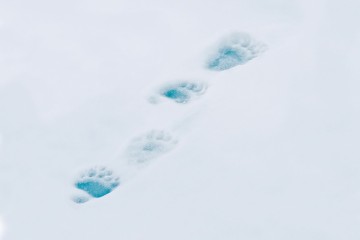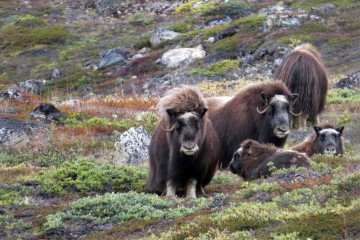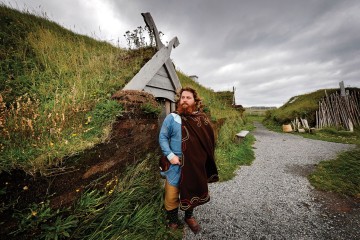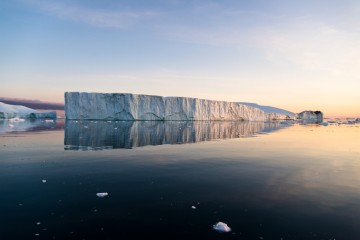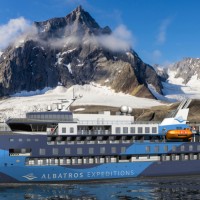All Canada Arctic cruises are designed to take you from one astonishing highlight to the next, each stop and visit designed to get you up-close with the region’s wilderness, culture, history and wildlife. A good Arctic cruise itinerary through this region will combine a bit of everything: visits to remote Inuit communities, Zodiac outings to renowned animal hot-spots, as well as plenty of kayaking and hiking options to get you out and about.
Here are some of the best highlights you should know about, which will help you choose the right itinerary, be it a Canada and Greenland cruise, a Baffin Bay cruise, a Northwest Passage cruise or one that also includes Newfoundland.
South Baffin Island
Baffin is the largest island in the Canadian Arctic Archipelago and a lot of cruises concentrate their itinerary along its southern coastline: the eastern facing West Greenland, the southern facing Newfoundland (sharing the Hudson Strait), and the western leading to the Northwest Passage. The coast of Baffin is dotted with fascinating Inuit communities and the waters all-round attract a phenomenal array of marine life (this is one of the best spots to see bowhead whales). Arctic cruises in Canada will mostly concentrate on the coastline and waters around South Baffin Island so, even if you know nothing else of your intended Arctic cruise itinerary, rest assured it’ll deliver on the goods if it meanders around South Baffin.
Hudson Strait
Used commercially for over three centuries and linking the Atlantic to famous Hudson Bay, the strait is impassable in winter and still boasts amazing icebergs by the beginning of summer. As you sail along, you can soak up the splendours and scan the coast (and ice floes) for passing seals and polar bears.
Ivujivik
The northernmost community in Nunavik, Ivujivik sits at the point where Hudson Strait meets the famous bay with the same name. The village is an ethereal site, set among such harsh landscapes, prone to dramatic sea tides.
Cape Dorset
Famous for being home to internationally-renowned Inuit sculptors and painters, Cape Dorset is an amazing cultural and historical stop-over, with a handful of ancient archaeological sites found not far from the coast. The Tuniit people have been living here for an estimated 3,000 years and were enticed to settle here by cape’s abundance of animal life. The community is charming in itself and acts as a springboard for stunning hikes nearby.
Ungava Peninsula
Straight south of Cape Dorset, across the Hudson Strait, is the Ungava Peninsula, a geologically enriched area that offers amazing hiking, kayaking and Zodiac outings. Many Arctic cruises will spend at least 2-3 days here alone, exploring the rugged coastline, choosing the best places to get you onshore and offering a wealth of activities, all aimed at wildlife spotting. This is an incredible bird-watching spot to boot, home to the largest colony of thick-billed murres in all of Canada.
Kangerlussuatsiaq Fjord, Greenland
Aside from simply having more days to cruise Arctic waters in search for more whales and wildlife, a Canada and Greenland cruise delivers the priceless chance to visit Kangerlussuatsiaq, in southern Greenland. The fjord sits just under the Arctic Circle and its relatively calmer and warmer waters attract a lot of marine life and make for a distinctly different landscape, much greener and lusher. There’s some fantastic cruising and hiking to be done here, least of all because the fjord, after a while, will seem endless; the longer you sail through, the more off-shoots you’ll discover! This very complex maze of waterways is but one of the many highlights all along the coast of Greenland and on a Canada Arctic cruise that extends to the east, you’ll at least get to enjoy a taste of it.
West Greenland
Crossing the Northwest Passage is rewarding enough for cruises taken in the High Canadian Arctic, yet having the chance to explore the very wild coast of West Greenland gives that achievement some stiff competition. Picturesque remote communities like Sisimiut, with their colourful houses and welcoming locals, make for fantastic stop-overs, although it’s the awe-inspiring wilderness that will no doubt capture your heart. On this side of Greenland, you can cast your eyes on the UNESCO-listed Ilulissat Icefjord and some of the largest icebergs on earth in Disko Bay, also renowned for attracting pods of whales. Disko Bay is Greenland’s side of Baffin Bay.
